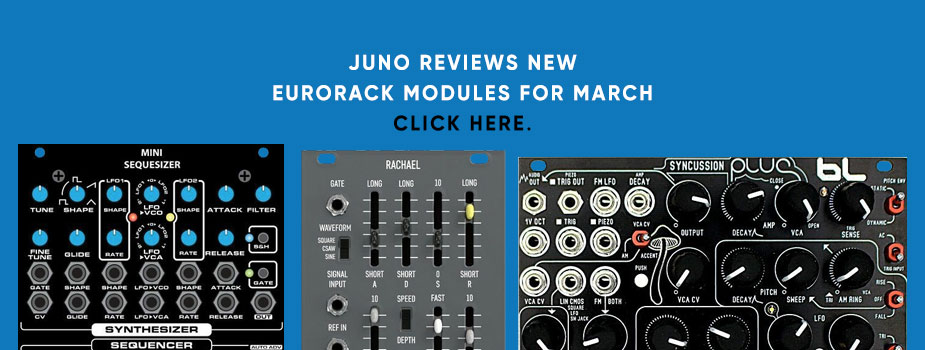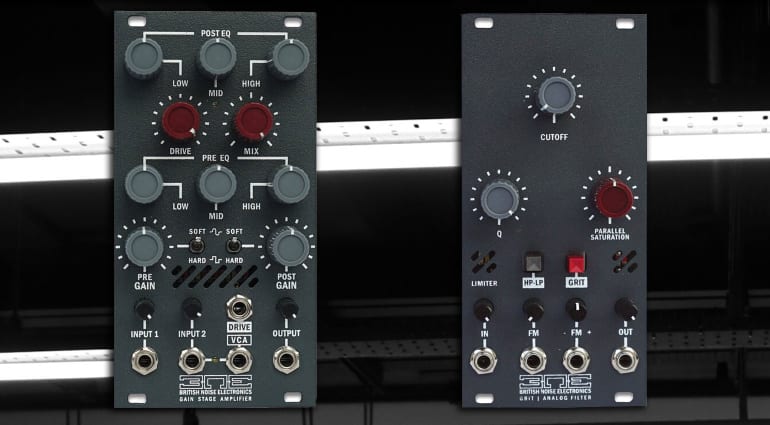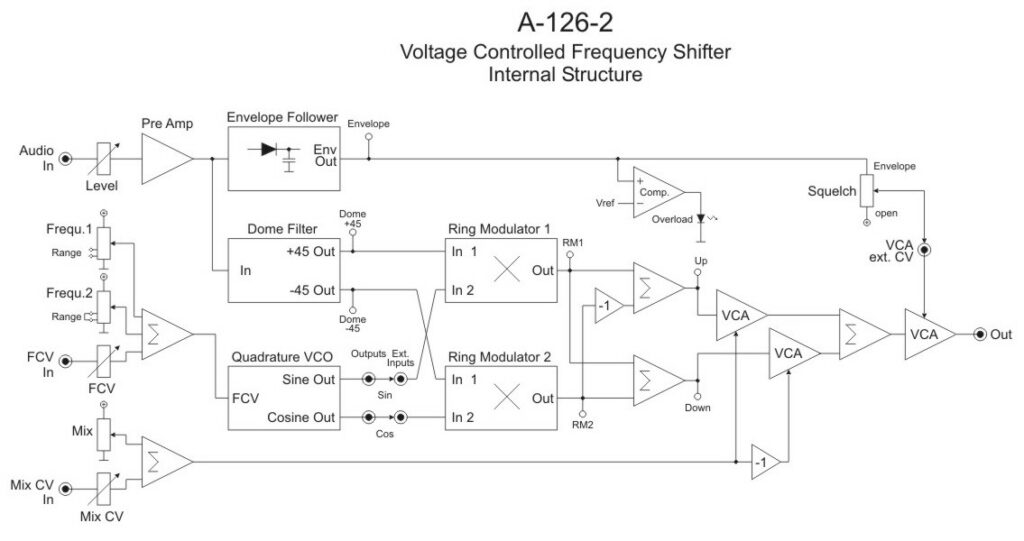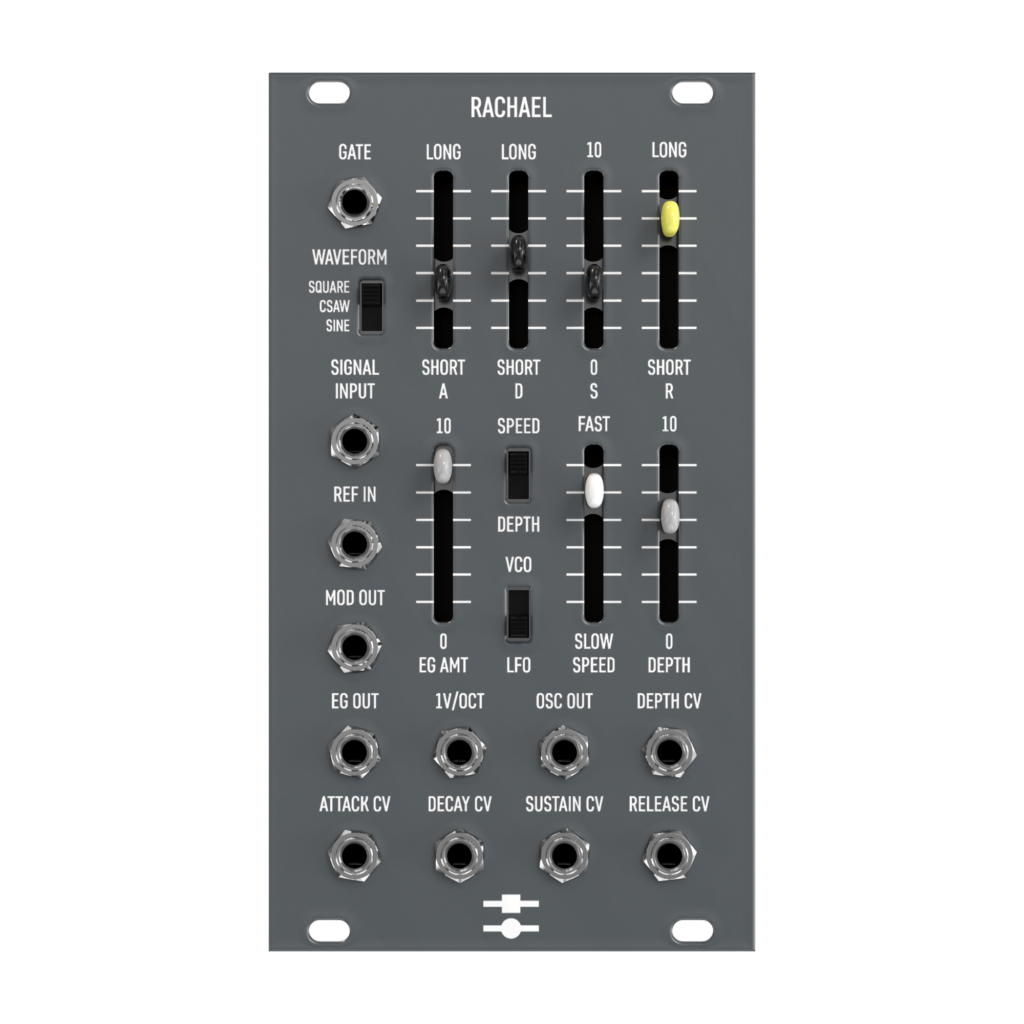March 2022 Eurorack module round-up
This month’s best new modules include a take on a cult classic percussion synth, a ‘sequesizer’ module from Division 6, takes on distortion from British Noise Electronics and Cosmotronic, plus two very difference expander modules from Doepfer and Black Corporation.

Blue Lantern Modules Syncussion Plus
Originally released in 1979, the Pearl Syncussion SY-1 is a cult classic drum machine which is the main inspiration for the Blue Lantern Modules Syncussion Plus. Percussion synth is probably a better descriptor for the approach here, as those who’ve heard the bleepy, zappy original will know. To say that the Syncussion doesn’t sound much like ‘real’ acoustic drums is an understatement, but BLM have really leaned into that, expanding on the basic presets of the SY-1’s two channels, allowing full access to the synth parameters and adding a decent amount of CV control. The Plus is just a single channel, but you can tweak the sound in near-infinite ways thanks to the extensive controls for the dual VCO and ‘shimmer’ ring modulation section.
The Plus can do nice enough hi-hats, surprisingly powerful kicks and disco-esque bleeps, but its real strength is in weirder percussive noises, Perc-style metallic crunches and techno synth bleeps. It’s certainly not a conventional drum machine, but it’s an impressively capable drum/percussion/bleep synth with a lot of potential crammed into its 27 HP width.
Division 6 Mini Sequesizer
Speaking of cramming in features, Division 6’s Mini Sequesizer manages to squeeze a sequencer and a mini synth voice into a single module. You may recognise the basic design from the brand’s Business Card devices, and the format proves to lend itself well to Eurorack adaptation. The synth is a basic but effective single-oscillator virtual analogue design. There aren’t too many surprises in terms of the sound, which is basic but effective with two LFOs, a basic AR envelope generator and CV control over just about every parameter (except, strangely, filter cutoff frequency).
The bottom half is a simple little 16-step sequencer with a built-in clock generator, pattern memory, real-time editing and some basic performance features. Neither the sequencer nor the synth itself are particularly groundbreaking in isolation, but they’re not really mean to be. The combination is simple, fun and useful, especially if you’re putting together your first system and want to cram in some basic sequencing and synth voice features on a budget. At £180, it’s good value for a neat little dual-purpose module.

British Noise Electronics Grit/Cosmotronic Peradam
Two very different but equally interesting takes on distortion landed this month. Via British Noise Electronics, the side-project of techno producer Ansome, the Grit Analogue Filter (pictured above alongside the Gain Stage Amplifier) is a cleverly implement mash-up of three types of distortion within the framework of a switchable high/low-pass filter. The signal feeds in through a gain stage and a limiter before hitting the filter. The Grit button engages a unity-gain distortion circuit to add harmonics, then there’s a post-filter parallel saturation control to add even more character. It’s a brilliantly versatile way to colour a sound, with a classy, quality feel thanks in part to the Neve-inspired design.
The Cosmotronic Peradam is a more straightforward distortion module, but one which also does things differently. The module splits the signal into two for parallel processing, with the dirty side of the signal path incorporating a complex process of phase modulation, ring modulation and amplitude modulation to create a uniquely tweakable form of distortion. It can be polite and subtle if that’s your preference, but things get particularly interesting when it’s pushed hard, with the feedback control allowing you to go through screaming fuzz territory into full-on self-oscillation.

Doepfer A-126-2EXP/Black Corporation Rachael
Finally this month, we have a couple of expanders designed to pair with existing modules. What’s interesting here is how they go about the same basic idea in completely different ways. Doepfer’s catchily-named A-126-2EXP is an expander for the updated A-126-2 frequency shifter released late last year. The module is mainly about adding extra outputs for the existing frequency shifter circuit, as shown in the diagram above: two audio outputs from the dome filter (+45 and -45 degrees); separate audio outputs from the ring modulators; CV from the internal envelope generator and dedicated outputs for up and down shift signals, designed to allow the module to be patched in stereo. The final socket is the only input on the expander, designed to blend one of the outputs back into the input signal, via a suitable attenuator, for a feedback effect. All in all, a lot of handy extra features in just 2 HP. Given how cheap it is and how little space it takes, the expander is a complete no-brainer for all A-126-2 owners.

Black Corporation’s Rachael Ring Modulator is an altogether different type of expander module. Perhaps ‘companion module’ is a better name for this one, designed mainly to be used with the Deckard’s Voice module (itself a Eurorack spin-off of the brand’s Deckard’s Dream synth. Rachael is a ring modulator with a built-in reference oscillator and envelope generator, adding ringmod to the Deckard’s Voice, but the way the module’s been designed means that its separate elements can also be used independently, expanding the synth power of the Deckard’s Voice. In turn, that means that the module can work with other synth voices – or indeed a selection of other modules – to add functionality. Think of it as either a ringmod, VCO, LFO, envelope generator or combination of all four and you can understand why it will appeal even to people who don’t own a Deckard’s Voice.